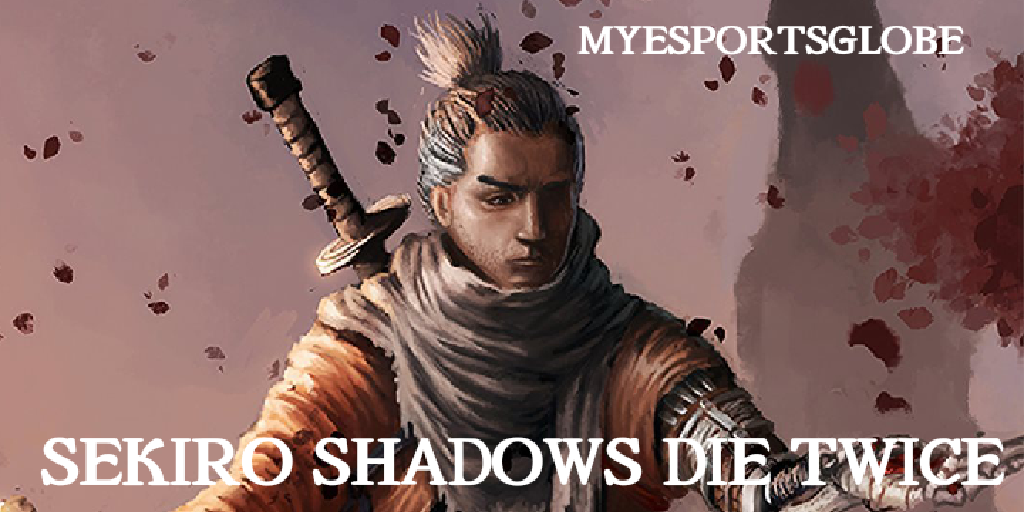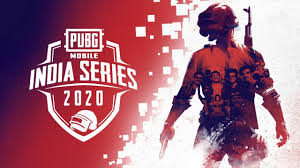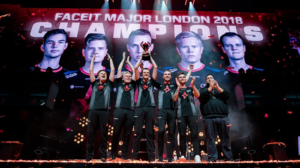Sekiro: Shadows Die Twice PC is an action-adventure video game developed by FromSoftware and published by Activision. The game follows a shinobi known as Wolf as he attempts to take revenge on a samurai clan who attacked him and kidnapped his lord. It was released for Microsoft Windows, PlayStation 4, and Xbox One in March 2019, and will be released for Stadia in October 2020.
Gameplay is focused on stealth, exploration, and combat, with a particular emphasis on boss battles. The game takes place in a fictionalized Japan set during the Sengoku period, and makes strong references to Buddhist mythology and philosophy. While creating the game, lead director Hidetaka Miyazaki wanted to create a new intellectual property (IP) that marked a departure from the Souls series of games also made by FromSoftware, and looked to series such as The Mysterious Murasame Castle and Tenchu for inspiration.
Sekiro received universal acclaim from critics, who compared and contrasted it to the Souls games. Praise was directed toward its gameplay and setting, although opinions on its high level of difficulty were more mixed. It was also nominated for and won several awards, including for game of the year. The game sold over five million copies by July 2020.
GAMEPLAY –
Sekiro: Shadows Die Twice is an action-adventure game played from a third-person view. Compared to FromSoftware’s own Souls series, the game features fewer role-playing elements, lacking character creation and the ability to level up a variety of stats, as well as having no multiplayer elements. It does, however, include gear upgrading, a skill tree, and limited ability customization.
Rather than attacking to whittle an enemy’s health points, combat in Sekiro revolves around using a katana to attack their posture and balance instead, which eventually leads to an opening that allows for a single killing blow.
The game also features stealth elements, allowing players to immediately eliminate some enemies if they can get in range undetected. In addition, the player character has the ability to use various tools to assist with combat and exploration, such as a grappling hook. If the player character dies, they have the option of being revived on the spot if they have resurrection power, which is restored by defeating enemies, instead of respawning at earlier checkpoints.
PLOT –
Sekiro is set in a re-imagined Japan during the late 16th century Sengoku period, where warlord Isshin Ashina has staged a coup and seized control of the land of Ashina. During this time, a nameless orphan is adopted by the wandering shinobi named Ukonzaemon Usui, known to many as “Owl,” who named the boy “Wolf” and trained him in the ways of the shinobi. Two decades later, the Ashina are on the brink of collapse due to the now elderly Isshin falling ill and the clan’s enemies steadily closing in.
Desperate to save his clan, Isshin’s adoptive grandson Genichiro sought the Divine Heir Kuro so he could use the boy’s “Dragon Heritage” to create an immortal army. Wolf, now a full fledged shinobi and Kuro’s personal bodyguard, loses his left arm while failing to stop Genichiro.
Having received the dragon’s blood from Kuro, Wolf survives and is brought to an abandoned temple to recuperate by a Sculptor; a former shinobi named Sekijo who now carves Buddha statues. Armed with a Shinobi Prosthetic, Wolf assaults Ashina Castle and confronts Genichiro again, defeating him, although the latter is able to survive as he had drunk a concentrated part of the rejuvenating waters, the rejuvenating sediment, and flees.
As Wolf rescues Kuro, the two are given the opportunity to flee Ashina forever, though Kuro instead decides to stay and perform the “Immortal Severance” ritual, which would remove his Dragon Heritage and prevent anybody else from fighting over him to obtain immortality. Wolf reluctantly agrees to help Kuro and sets out to collect all of the necessary components for the ritual, including a special sword that can kill immortals known as the Mortal Blade. During his quest, Wolf crosses paths with Isshin Ashina, who gives him a new name: Sekiro; the “one-armed wolf.”
After collecting all the components for the ritual, Sekiro is confronted by Owl; who was thought dead years prior. Owl reveals he also seeks the Dragon Heritage, and orders Sekiro to renounce his loyalty to Kuro. If Sekiro sides with Owl, he is forced to fight Isshin’s doctor, Emma, and Isshin himself. Upon defeating them, Sekiro proceeds to betray Owl while Kuro, in horror, realizes he has been corrupted by bloodlust. If Kuro is chosen, Sekiro fights and kills Owl. He then uses the gathered items to enter the Divine Realm to collect the final component: the Divine Dragon’s tears.
Upon returning to Ashina, Sekiro discovers Isshin has succumbed to his illness and that the castle is under attack by the clan’s enemies. Being informed by Emma that Kuro has fled, Sekiro finds him under attack by Genichiro, wielding a second Mortal Blade. Genichiro then challenges Sekiro one last time, only to be defeated once again. Realizing Ashina is lost, Genichiro sacrifices himself by using the Mortal Blade to revive Isshin in his prime so he might restore the clan. Although he disagrees with Genichiro’s methods, Isshin honors his grandson’s wish and fights Sekiro.
After defeating Isshin, there are three possible endings. Giving Kuro the Dragon Tears results in the standard ending, “Immortal Severance,” where the Dragon Heritage is removed at the cost of Kuro’s life. Afterwards, Sekiro takes the Sculptor’s place at the abandoned temple and ends his life as a shinobi. Working with Emma to find a way to complete the ritual without Kuro having to die will result in the “Purification” ending, where Sekiro manages to save Kuro at the cost of his own life. The final ending, “Dragon’s Homecoming”, is obtained by helping the Divine
Child of the Rejuvenating Waters. Kuro’s body dies but his spirit lives on inside the Divine Child. Afterwards, Sekiro chooses to follow the Divine Child on a journey to return the Dragon Heritage to its birthplace.
DEVELOPMENT –
Development of Sekiro began in late 2015, following the completion of Bloodborne’s downloadable content, The Old Hunters. The game was revealed via a teaser trailer at The Game Awards 2017 in December, showing the tagline “Shadows Die Twice”. The game’s full title was revealed to be Sekiro: Shadows Die Twice during Microsoft’s press conference at E3 2018. It was directed by Hidetaka Miyazaki of the Japanese development studio FromSoftware, best known for creating the Souls series and Bloodborne.
The game was published by Activision worldwide, with FromSoftware self-publishing it in Japan, and Cube Game publishing in the Asia-Pacific region. Sekiro’s soundtrack was composed by Yuka Kitamura, with some contributions from Noriyuki Asakura. The game was released for PlayStation 4, Windows, and Xbox One on 22 March 2019. A collectors edition of the game was also released the same day, and included a steelbook case, a figurine of the protagonist, an art book, a physical map of the game’s world, a download code for the soundtrack, and in-game coin replicas. A port for Stadia will be released in late 2020.
Sekiro draws inspiration from the Tenchu series of stealth-action games that were partially developed and published by FromSoftware. The team initially considered developing the game as a sequel to Tenchu, but as that series had already been shaped by several different studios before they obtained the rights to it, they instead opted to take the project in a different direction. Miyazaki intended for the combat changes to capture the feel of “swords clashing”, with fighters trying to create an opening to deliver the fatal strike.
He and the team also created the game to be a fully single-player experience, as they believed multiplayer to have limitations they wanted to avoid. The word “Sekiro” is a contraction of “Sekiwan no ōkami”, which translates as “one-armed wolf.” Additionally, the subtitle “Shadows Die Twice” was originally only meant to be used as a slogan for the teaser trailer until Activision requested it to be kept for the final name. Despite the game taking place during the Sengoku period of real world Japanese history, there are no historical people or locations featured in the game.
RECEPTION –
According to review aggregator Metacritic, Sekiro received “universal acclaim” for the PlayStation 4 and Xbox One versions, and “generally favorable” reviews for the Windows version. Many critics praised the game’s combat for departing from the typical style of FromSoftware’s other similar games. In a review for Destructoid, Chris Carter described open combat as “akin to a waltz” and praised the variety of ways the combat could be approached, writing that players had more choices than in Dark Souls or Bloodborne.
Brandin Tyrell from IGN praised the game’s focus on “split-second swordsmanship”, and despite the fact that “to any Souls veteran, Sekiro’s timing-based lock-on combat of strikes and slashes is familiar”, the game’s “sense of safety” caused the combat to feel “refreshing and new”.
Reaction to the lack of online multiplayer was mixed. Several reviewers noted that this allowed the game to have a full pause button, which was praised. However, Tyrell noted that he “missed the small notes left by others in the world alerting me to imminent threats or hidden secrets, or that vague sense that danger lurks behind me in the form of an invading player” that defined the experience of playing “Soulsborne” games. He also noticed the “lack of PvP battles, which seem[ed] like a waste of the new emphasis on skill-based swordsmanship”, and argued that the parrying and blocking mechanics would have suited online play.
SALES –
On release day, Sekiro drew over 108,000 concurrent players on Steam, the highest for a new game launched during January–March 2019, and the third highest of any Japanese game in the platform’s history, behind only Monster Hunter: World and Dark Souls III. Later in March, it had reached over 125,000 concurrent players on Steam, making it one of the most played games on the platform at the time.
In its debut week, Sekiro topped both the UK and EMEAA (Europe, Middle East, Africa, Asia) charts, surpassing Tom Clancy’s The Division 2. In Japan, the game debuted at first with 157,548 retail copies sold in its opening weekend. Within ten days of its release, over two million copies were sold worldwide, which rose to over five million by July 2020.
The game was nominated for and won several awards, including game of the year at The Game Awards 2019, by editors of GameSpot, and by fans in the 2019 Steam Awards.
To read more about your favourite games go to our website, MyEsportsGlobe.
If you haven’t yet then do follow MyEsportsGlobe on social handles to get regular updates –







